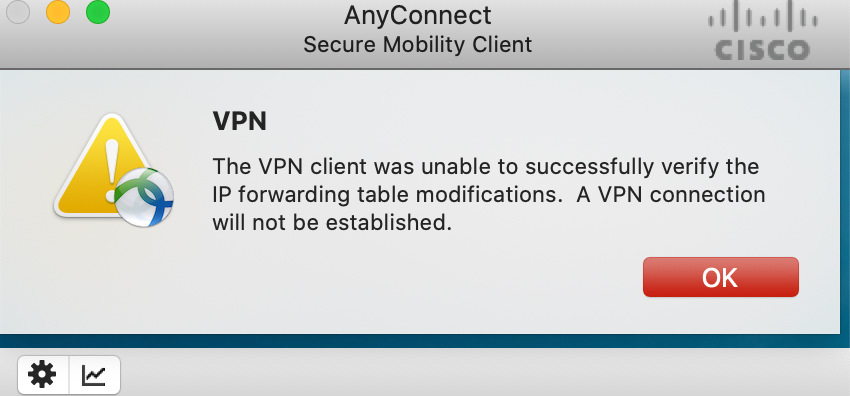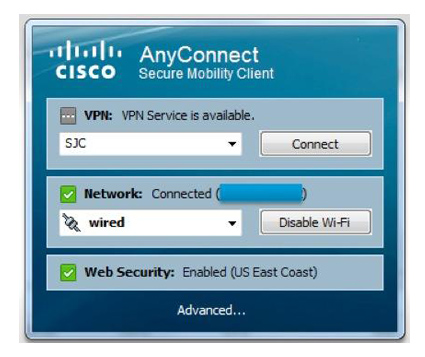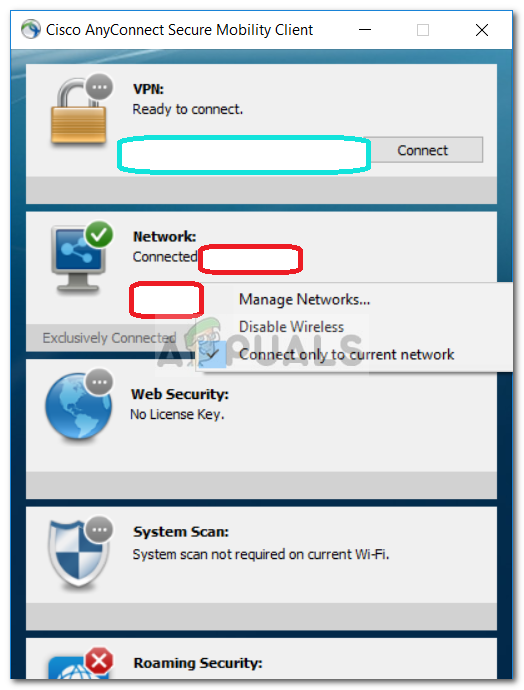- How To Configure Cisco AnyConnect VPN Client For Windows | Univ...
- See Full List On Cisco.com
- AnyConnect VPN Client Troubleshooting Guide - Cisco
- AnyConnect Was Not Able To Establish A Connection To ... - Cisco
- Open Anyconnect - put in user/password click connect - and it almost instantly comes back asking for password again in an endless loop. The answer I get from the Vendor is ' Cisco does not officially support the IPSEC client to work with Windows 10 as of yet.
- My need: I would like to make the local network printer work when I am using my VPN with cisco AnyConnect Sure Mobility Client VPN. When I not conected to the VPN, I am able to ping the printer and use it, but when the VPn is on, routing tables are changed and I am not able to ping and use the printer anymore.
- A user running Internet Connection Sharing is having trouble installing the Cisco 3000 VPN client This is an easy one to fix. The user needs to disable ICS on his machine before installing the VPN.
I was trying to log into work but had trouble making a VPN connection. I use Cisco AnyConnect VPN Client. This post describes how to fix the following error messages when using Windows 8 Pro:
- AnyConnect was not able to establish a connection to the specified secure gateway. Please try connecting again.
- The VPN client driver encountered an error. Please restart your computer or device, then try again.
The steps to fix this problem are as follows:
How To Configure Cisco AnyConnect VPN Client For Windows | Univ...

Note: Make sure that port 443 is not blocked so the AnyConnect client can connect to the ASA. When a user cannot connect the AnyConnect VPN Client to the ASA, the issue might be caused by an incompatibility between the AnyConnect client version and the ASA software image version. This is a workaround-not a fix. After you power on your laptop/workstation, but before starting Cisco AnyConnect, start your vm (i.e., vagrant up). Make sure you can connect to an app in the vm via the browser.
1. Edit a registry entry by running a program called regedit. Right-click on it and Run as administrator. Note that I use Start8, by Stardock, to have a Start button and menu. After you left-click on Run as administrator, your computer might ask you to enter the admin password.
2. Go to the appropriate VPN registry directory called ComputerHKEY_LOCAL_MACHINESYSTEMCurrentControlSetServicesvpnva
3. Double left-click the DisplayName key.
An Edit String pop-up window will appear.
The text under the Value data: field on my computer looked like this.
@oem20.inf,%vpnva_Desc%;Cisco AnyConnect VPN Virtual Miniport Adapter for Windows x64
4. Change the field to
Cisco AnyConnect VPN Virtual Miniport Adapter for Windows x64

by removing all the text and characters that are on the left of the word Cisco.
The end result should look like this:
5. Left-click the ‘OK’ button.
6. Exit the Registry Editor
7. Run Cisco AnyConnect VPN Client and reconnect.

That’s all there is to it. Good luck!
Update : 2/13/2014
I recently updated my computer on February 13, 2014 with Microsoft’s updates and saw that the text under the Value data: field on my computer looked like this:
@oem10.inf,%VPNVA64_Desc%;Cisco AnyConnect Secure Mobility Client Virtual Miniport Adapter for Windows x64
It is different from what I had originally posted. I’m not really sure how or why it changed and I don’t have time to find out. I also updated to Cisco AnyConnect Secury Mobility Client Version 3.1.04066. As far as I can tell, the value of …
@oem10.inf,%VPNVA64_Desc%;Cisco AnyConnect Secure Mobility Client Virtual Miniport Adapter for Windows x64
.. works, but the value of
Cisco AnyConnect VPN Virtual Miniport Adapter for Windows x64
See Full List On Cisco.com

AnyConnect VPN Client Troubleshooting Guide - Cisco
does not work with Cisco AnyConnect Secury Mobility Client Version 3.1.04066.
Update : 2/15/2014
AnyConnect Was Not Able To Establish A Connection To ... - Cisco
Changing the Value data: field to
Cisco AnyConnect Secure Mobility Client Virtual Miniport Adapter for Windows x64
without
@oem10.inf,%VPNVA64_Desc%;
seems to work better, too.
Symptoms
When you have the Cisco AnyConnect Secure Mobility Client installed on a Surface Pro 3, you may experience one of the following symptoms:
If you try to connect to a wireless network by using the Cisco Network Access Manager (NAM), you cannot connect to the wireless network.
You can connect to an open (that is, unsecured) wireless network by using the Cisco Network Access Manager (NAM). However, you cannot use the Cisco NAM to connect to a wireless network that requires a password or other authentication.
If you use the Windows 8.1 Networks interface to connect to the wireless network, you can connect to the wireless network.

